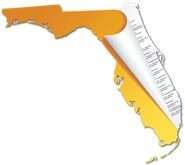Filing Proposed Orders of Summary Administration and Homestead with the Court
There are many challenges that pro se parties face in filing a petition for summary administration in Florida. One such challenge is how to actually get proposed summary administration probate orders in front of a judge to be reviewed and signed.
One would think that after taking the time to gather and prepare the proper probate forms for summary administration of a small estate, i.e. a Petition for Summary Administration, Petition to Determine Homestead Status of Real Property, Affidavit of Heirs, etc., getting the court to act on your probate petition would be the easy part. More often than not, that isn’t so.
Most pro se summary administration petitioners don’t realize that once the various probate petitions and supporting documents (certificate of death, etc.) are filed with the court to open a small estate with a summary administration, a set of proposed orders must still be prepared. Our customers are often surprised to learn that the court, much less the actual judge assigned to the case, does not type the orders that will be signed. Proposed probate orders must be typed and presented to the probate judge utilizing the specific methods that the judge has mandated. If you don’t follow the judge’s procedure, your case will sit in purgatory until the proverbial cows come home.
Using the Correct Summary Administration Forms
Before we get back to examples of procedures for getting proposed probate orders before the judge, I want to again stress the importance of having the proper forms and proposed orders for your summary administration case.
Although it may sound counter-intuitive, one of the worst mistakes you can make is depending on the “law library”, even the one in the court you are filing in, to have proper probate forms. There is a project that I recently worked on for a customer who actually had the judge tell her, “I’ve never seen these types of probate forms before, where did you get them?” The petitioner told the judge that she had purchased them from the law library. The judge replied that she could not make sense of the petition (it was a rambling 28 pages long) and told the petitioner that an order would be forthcoming. Soon after, the judge issued an order directing the petitioner to file a, “Second Amended Petition for Summary Administration”, and to make sure that it addressed at least a dozen issues that were not addressed within the 28-page packet that was previously submitted. Yes, the petitioner is now on her third try at a petition for summary administration, but since we are typing her forms, she is not going to have that issue this time.
Now, back to the subject of this blog, which is the process of submitting proposed probate orders to the judge for signature. Here is the bad news: There are 67 counties in Florida, and most of them have a different procedure on how they want it done.
I can’t list probate procedures for all 67 Florida counties, but I will give four basic examples of how widely procedures can vary. We’ll use the “Small Friendly County”, Miami-Dade County, Broward County, and the county from the bowels of hell that shall remain nameless.
It’s Time to Prepare and Submit Proposed Orders of Summary Administration
So, you’ve studied the Florida Statutes concerning probate and have read the Florida Probate Code. You’ve drafted your petition for summary administration, homestead petition, and supporting documents, and you’re ready to draft proposed summary administration and probate orders for the judge’s signature.
A typical bundle of proposed Florida pro se probate orders may consist of:
- Order of Summary Administration (Testate)
- Order of Summary Administration (Intestate)
- Order Admitting Will to Probate (Either Self-Proved or with an Oath of Witness)
- Order Determining Status of Homestead Property
The Small, Friendly County
With some small, friendly Florida counties, getting your orders before the judge can be as simple as calling up the clerk of court, (a real human will answer on the first or second ring) and asking the clerk what their local procedures are for accepting proposed orders of summary administration. Most likely you will be told to simply make two or three copies of the proposed orders and mail them to the court along with self-addressed stamped envelopes. They will even give you the address to use and ask you about your grandchildren. A week or two later, your probate case is done.
Miami-Dade County
Despite its enormous size, the Miami-Dade County probate system works very efficiently if you know the secret handshake. The eleventh judicial circuit, which encompasses Miami-Dade County, uses an electronic system known as “Probate E-Courtesy” to handle the task of getting proposed probate orders, like summary administration and homestead determination, before their judges. You must first register for an E-Courtesy account, and then have your proposed orders ready to upload in Microsoft Word format. You must also upload a courtesy copy of the corresponding petitions in .pdf format. Once you have done this properly, you’ll get an email from the system letting you know that the proposed probate orders have been accepted and are on their way to a judge. My favorite story about judges and probate orders actually comes from Miami-Dade County. Once, I helped a customer create and upload proposed orders to his E-Courtesy account on a Sunday afternoon. Twenty-seven minutes later, the orders were signed by the judge and uploaded to the Florida e-portal for docketing with the clerk of court! In contrast, if you send paper orders to Miami-Dade, they will sit there until the cows come home, leave, and come home again.
Broward County
Broward is another huge South Florida county in the seventeenth judicial circuit. Broward County also uses an electronic system for in-taking proposed orders, but it’s slightly more complicated. First, you must download and complete court mandated checklists for every petition that you have filed. Most counties have their staff complete these checklists as part of the intake process, because, presumably, the court employee knows what to look for. Broward has out-sourced that step to you! They are very serious about their checklists. Also make sure you’ve filed your criminal history affidavit! Once you’ve prepared your proposed orders, convert them to .pdf format. You must have a Florida E-Portal Account opened, which means that you better have filed your Notice of Designated Address and Email Address, but I digress. Broward wants you to e-file (as opposed to e-courtesy) a cover letter (some courts yell at you if you send a cover letter) attached to the proposed orders along with the court mandated checklists. If you do something wrong in Broward, don’t wait by the phone. Even when you do everything right, it may take a while or even some prompting to get your orders moving towards the judge. This, of course, refers only to pro se petitioners. Families who can afford an attorney undoubtedly have a smoother process or are at least isolated from the stress. All this being said, I like Broward County. They do a good job for having to deal with such a huge workload on a limited budget.
The County that Shall Remain Nameless
I have no desire to further infuriate the spiny creature who answers the phone at the probate clerk’s office in this god-forsaken county, because I still have to interact with it.
In this county, they are very serious about their customer-completed checklists too, but they make a little game of it. They tell you where to go to download the checklist. Part of the checklist asks you to refer to the Docket Numbers and Docket Line Number that corresponds to the items on the checklist. No problem I thought, I’ll just hop over to the Clerk of Court’s website and print a copy of the docket. Not in this county. Forty-five minutes later, I’m still on their website refusing to believe that the public can’t access a probate docket (all the other counties allow this). So, in desperation, I called the creature:
Me: I’m having a problem with your website. I can’t access a docket on a probate case.
Clerk: Are you a party to the probate?
Me: No.
Clerk: I’m sorry sir, that information is confidential.
Me: So, if a “party” is trying to fill out your court mandated probate checklist, how does that person get to look at the docket?
Clerk: Well, they’ll have to request access.
Me: How do they do that?
Clerk: They’ll have to submit a SIGNED AND NOTARIZED FORM to the County Who Shall Remain Nameless’ IT department requesting a username and password for the website.
Me: No other county does that.
Clerk: Well we do.
Me: So, a serious question here ma’am. What if a probate petitioner doesn’t have a computer, doesn’t have an attorney, and just wants to get a copy of THEIR OWN docket so they can fill out your mandated checklist?
Clerk: Well, I’d guess they should find someone with a car to drive them to the library to use a computer.
Me: Well ok then! Thank you.
So, downloaded the super-secret form, had it notarized, and emailed it to their IT department. A few days later I received my username and password in the mail. Of course, none of the information is confidential, any member of the public could do just what I did. But at least I had access to the docket. Smooth sailing, right? No.
The Real Misery Begins
Then, I had to download a (I believe it was an 18-page file) which describes how to send an email with the proposed orders to the judge. The subject line of the email has to contain specific information in a specific order. Then, the manual goes into a chapter about how to get into the Microsoft Word advanced features to “strip” your files of extraneous, hidden coded characters, and anoint and bless the file prior to sending it. And for heaven’s sake, make sure you use the right font and pitch. Also, they make it clear that they want the customary lines for the judge’s signature and date removed from the proposed orders, or they will be rejected with an error code. A what? They also want courtesy copies of the petitions attached to the same email. Just when you thought it couldn’t get any worse, you’re introduced to their “error code” system. For example, if you submit your proposed orders, and something is wrong, don’t expect anyone to take a moment to reply and tell you what the issue is. They will respond with something like “ERROR CODE R-4” – which you have to then look up in their error manual (which you have to download), for an explanation of the deficiency.
The only good thing I can say about this miserable county, is that after completing this multi-day task, the result was a signed Order of Summary Administration from a judge in the county that shall remain nameless.
Hiring a Document Preparation Service
When considering hiring a document preparation company to prepare and file your Florida Summary Administration probate forms, you may want to think of the value added services they provide such as decoding and dealing with the numerous probate filing procedures in place across Florida.
Florida Document Specialists provides a flat-fee service for the preparation and filing of your Florida Summary Administration forms. Visit our page on Summary Administration to lean more about the process and the services we offer.
Comments
We’d love to hear about any experiences you’ve had while interacting with probate clerks as a pro se litigant. Feel free to leave comments below.

